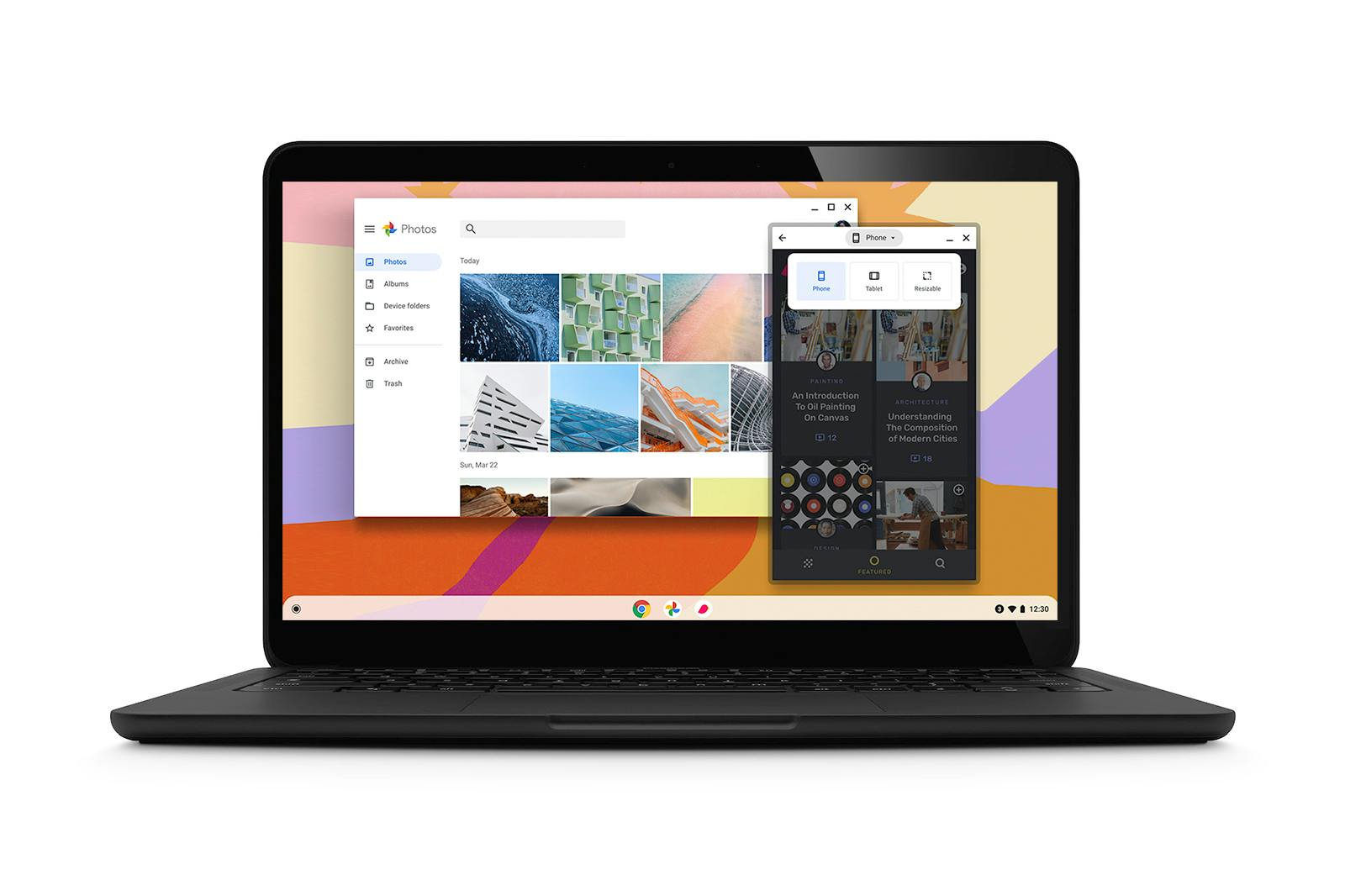
In the Google Play Store, Chromebook users can find Android apps to do just about anything: get lost in a medieval role-playing game, make a weekly to-do list, listen to their favorite podcasts, or stay connected with friends and family. Users can even download and save content onto their Chromebooks to use their apps offline whenever they want.
But for the most part, Android’s rich app experiences are designed for smartphones with much smaller screens than ChromeOS devices. When people use their apps on a laptop or tablet, a number of screen compatibility issues can crop up: content gets cut off in split-screen mode, portrait-mode-only apps launch in fullscreen, and in some cases, desktop use can even cause the app to crash.
That’s why ChromeOS is introducing improvements to ensure a great mobile app experience, no matter what device users are on. And the best part is developers don’t need to do anything — we’ll be rolling out these changes along with the Android 11 update over the next few months.
Improved window management for Android mobile apps
Starting in ChromeOS 93, improved window compatibility for mobile apps is now available on Android 11-enabled Chromebooks. With this first in a series of upcoming updates, apps will run in a window locked to phone or tablet orientations.
Users can easily switch between a predefined phone and tablet view by using a simple window resize UI that appears when they hover over the top of the app screen. Users can also disable this window management feature to enable full resizability by clicking the “Resizable” option.

This feature applies to most apps available in the Play Store not currently optimized for desktop use. Games and Media apps that have fullscreen mode enabled to deliver more immersive experiences will continue to launch in fullscreen mode, but users can change the window view at any time.
For more details and tips, check out our post about optimizing your Android apps for desktops.
Check your app’s performance on desktop
Here’s how you can get a better idea of how your users will experience your app on ChromeOS:
- Make sure your Android device is running on version 11 or newer. You can check the Android version on your ChromeOS device under Settings > Apps > Google Play Store > Manage Android Preferences > System > About Device.
- Confirm that the ChromeOS version of your device is 93 or later. You can check the ChromeOS version of your device under Settings > About.
- If your app is already installed on your ChromeOS device, uninstall and reinstall it.
- Launch the application on your ChromeOS device.
- Ensure that the application is in freeform window mode (not maximized or fullscreen).
- Check if the top bar of the app has the UI element to switch window orientations.
Adapt your Android apps for ChromeOS
Better window management for Android mobile apps is an important step toward creating a seamless user experience on larger screens. But the best way to make sure users get the most out of your app on ChromeOS is to adapt it for desktop use.
We broke down some helpful steps to ensure your app looks and works great across form factors and screen sizes, as well as some tips for optimizing for ChromeOS.
If you have questions or feedback about improved window management for Android mobile apps on ChromeOS, reach out to us at chromeos-developer-feedback@google.com.